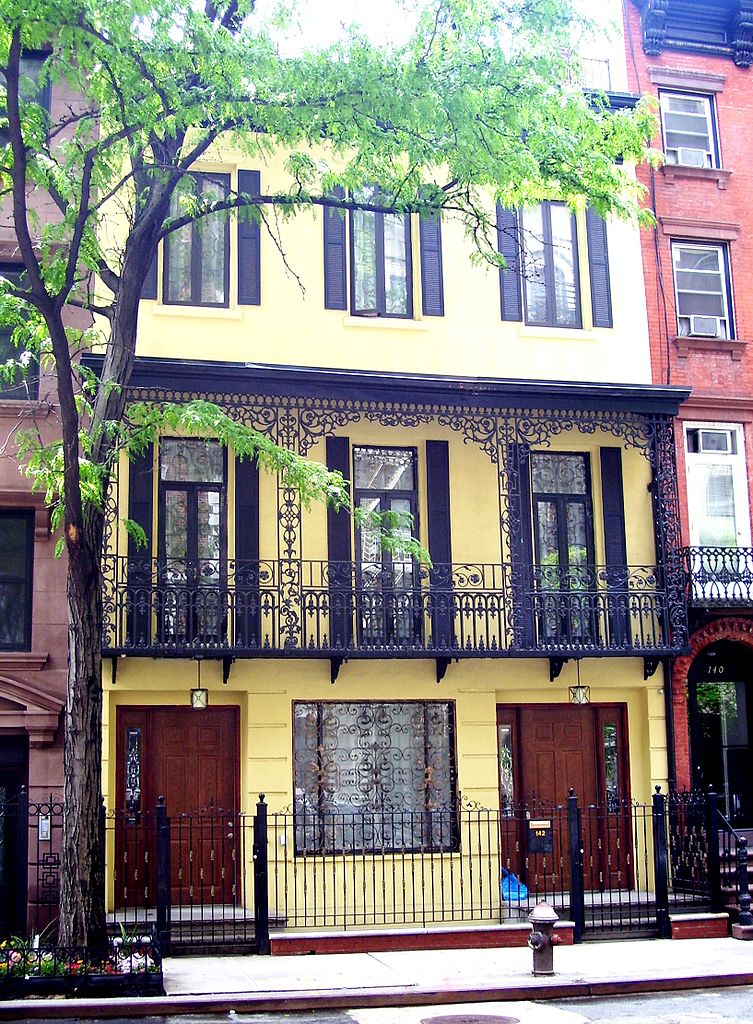#8190. Vibrant Yellow Facade with Elegant Black Ironwork: Historic Urban Townhouse
The image showcases an elegant three-story townhouse painted in a vibrant yellow color, situated in a typical American urban architectural row. This is a beautiful example of city architecture, likely from the late 19th or early 20th century, that has preserved its historical architectural details.
The facade is painted in a rich yellow hue, creating a striking contrast with the neighboring brick buildings. What adds particular expressiveness is the intricate black wrought ironwork: the second-floor balcony with its elaborate pattern railings, the decorative cornice with lacy trim between the second and third floors, and the artistically designed fence in front of the house.
The architectural composition of the facade is symmetrical, featuring two dark wooden entrance doors on the ground floor. Between them sits a wide window with decorative ironwork. The second floor is distinguished by a spacious balcony with three tall windows, while the third floor is adorned with four windows with contrasting black shutters.
The facade design incorporates elements of neoclassicism with subtle French architectural influences, giving the building a special charm and individuality within the urban landscape. The green tree framing the building on the left adds an organic touch to this architectural image.
When designing your own facade, several techniques can be borrowed: the use of contrasting colors (in this case, a yellow background with black decorative elements), symmetrical window placement, the addition of wrought iron details to create an elegant silhouette, and the application of decorative cornices to visually separate the floors. Such elements can add notes of historical charm even to a contemporary building.
